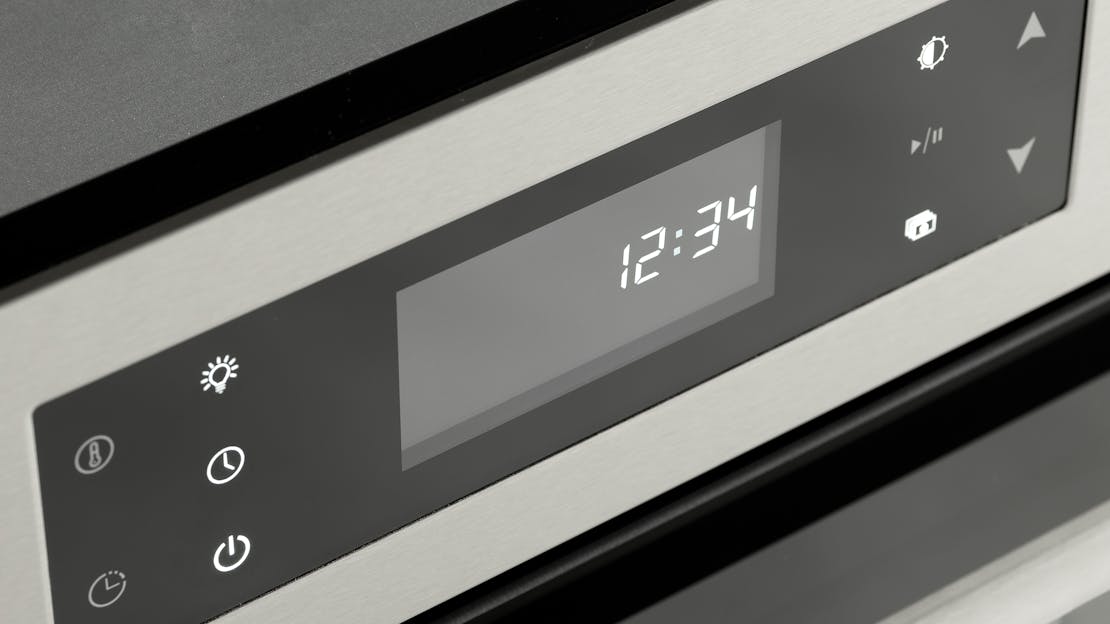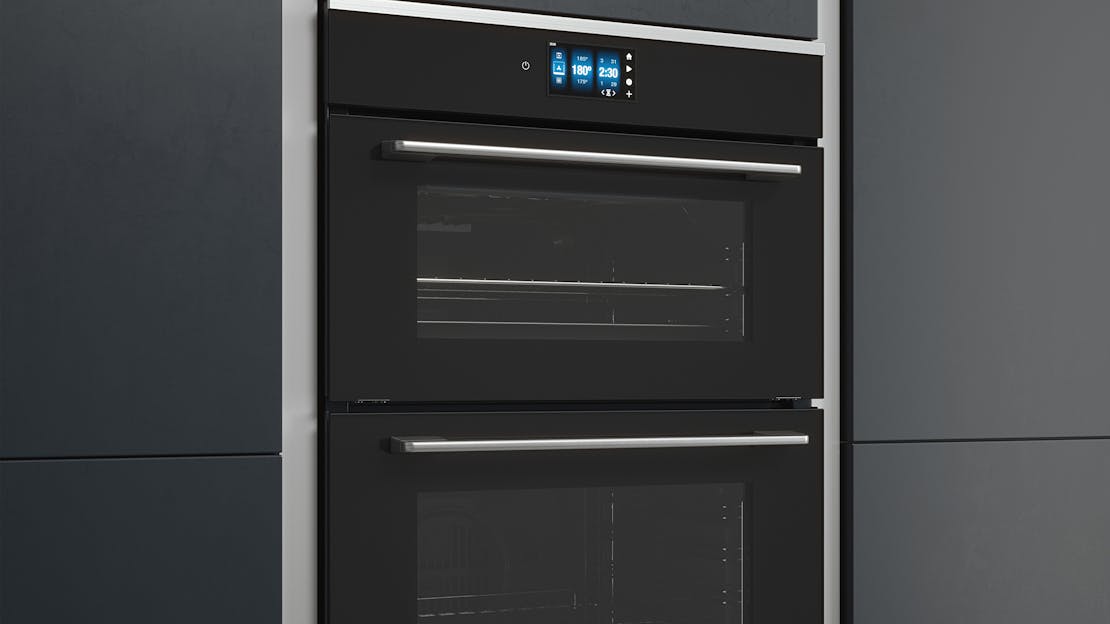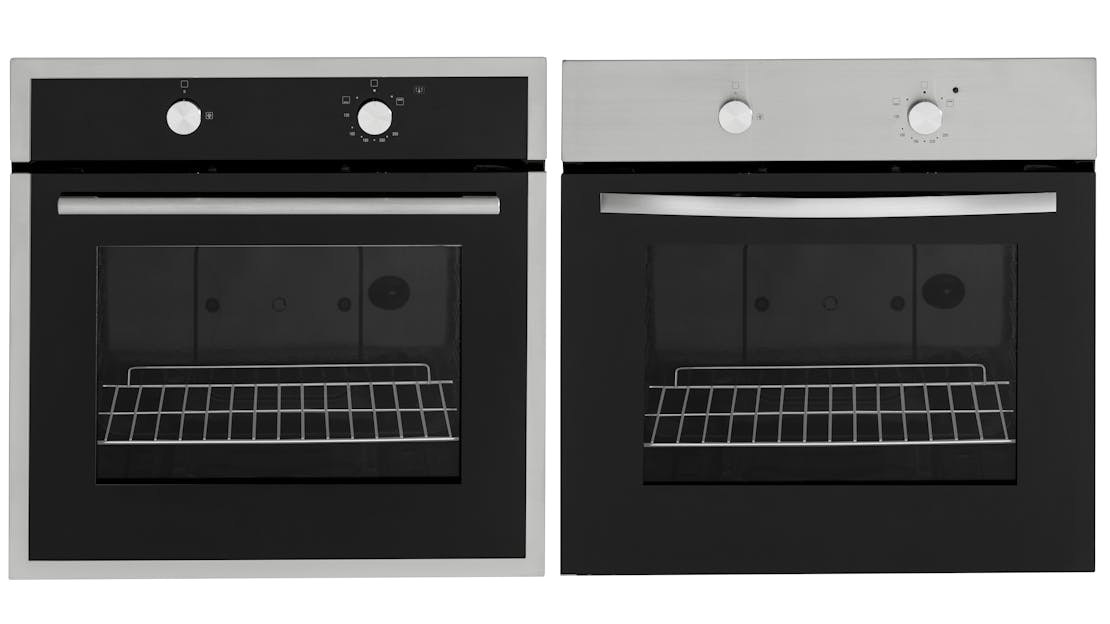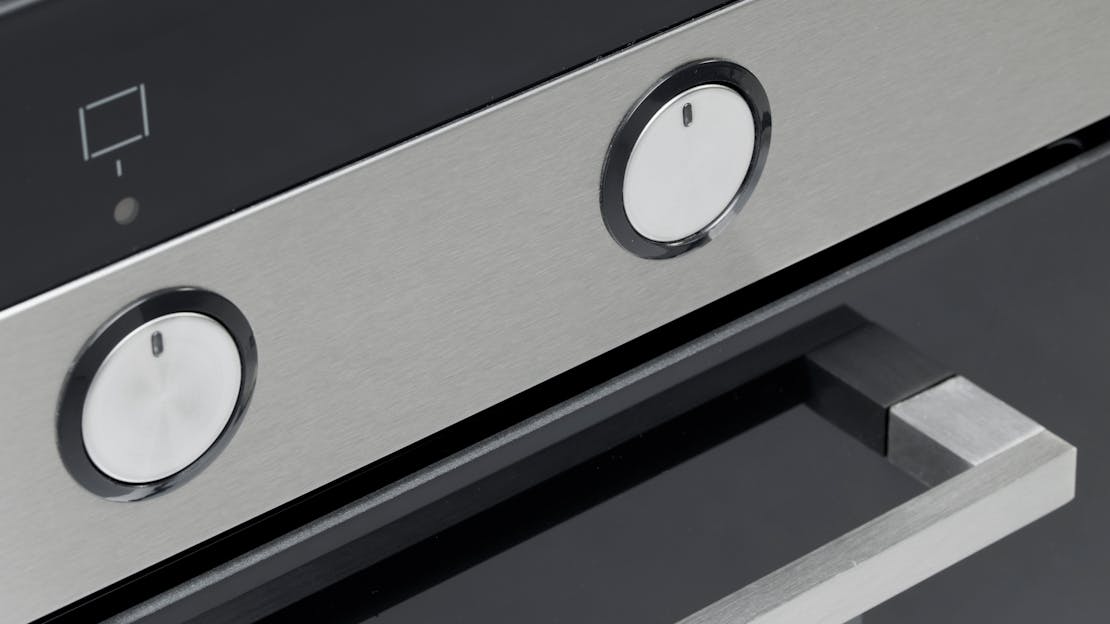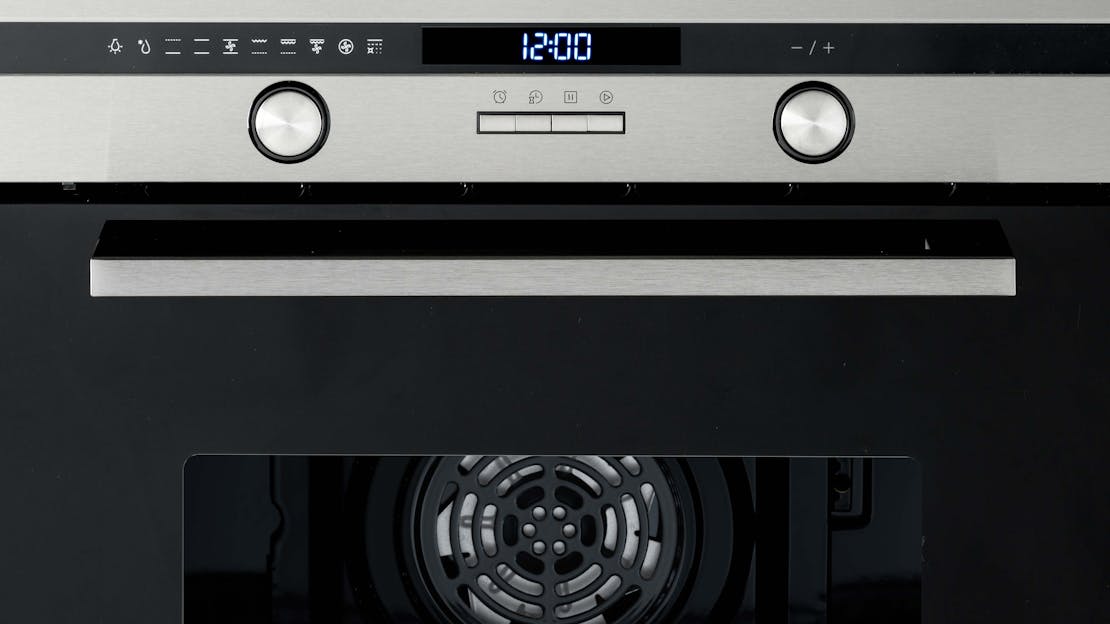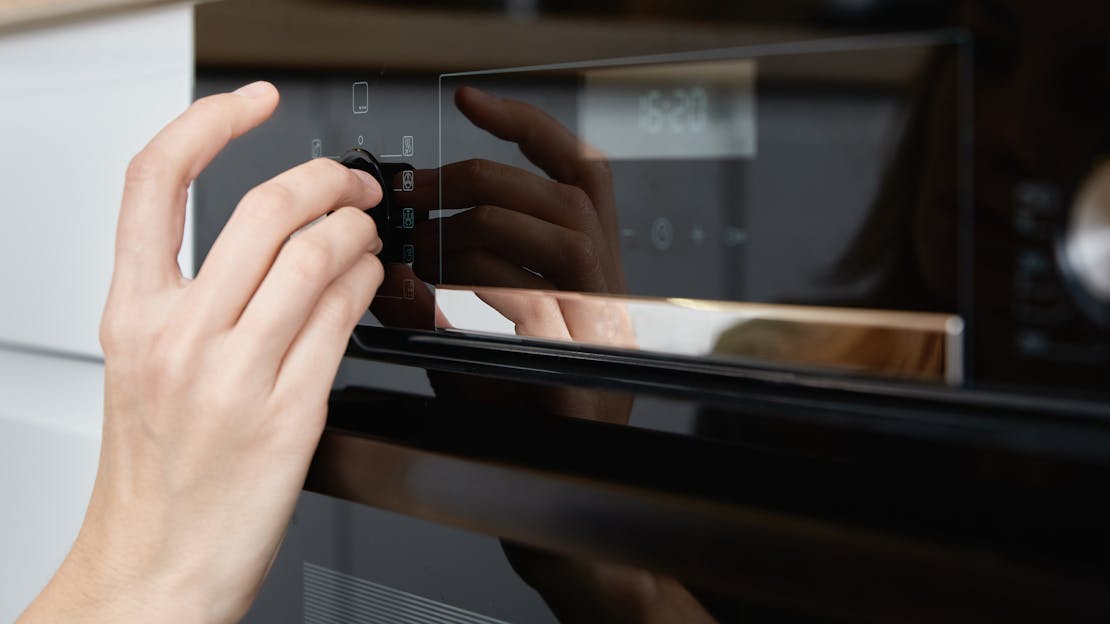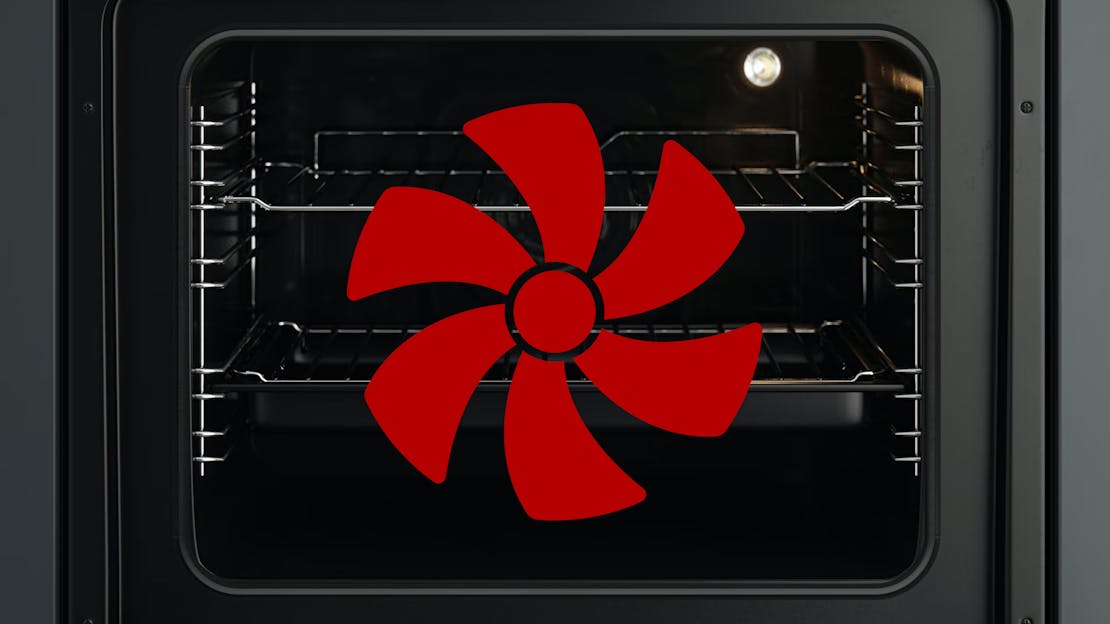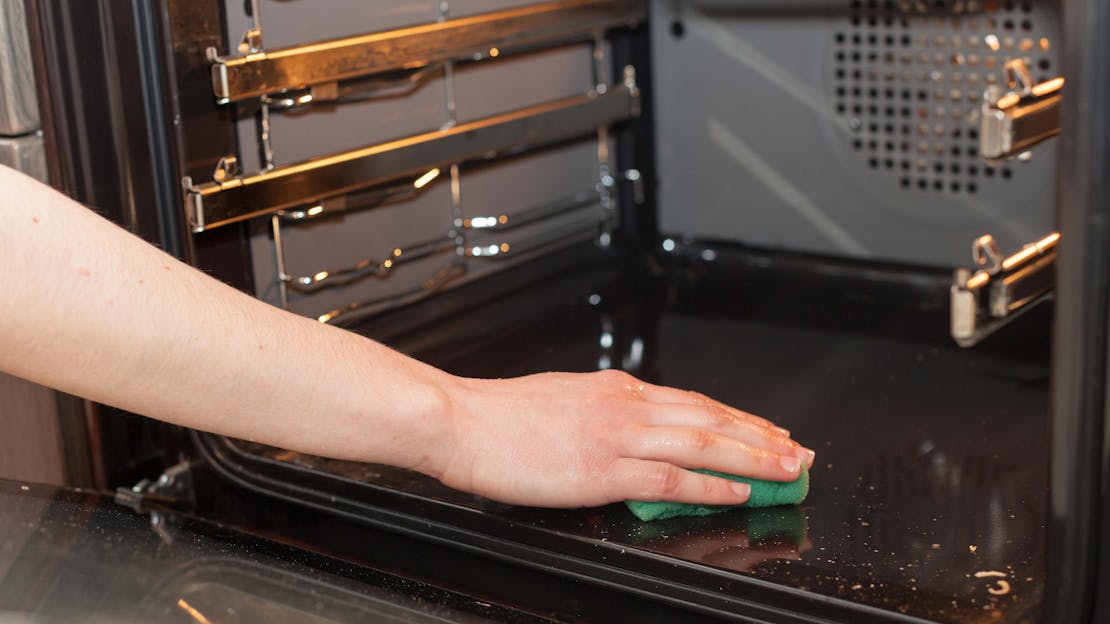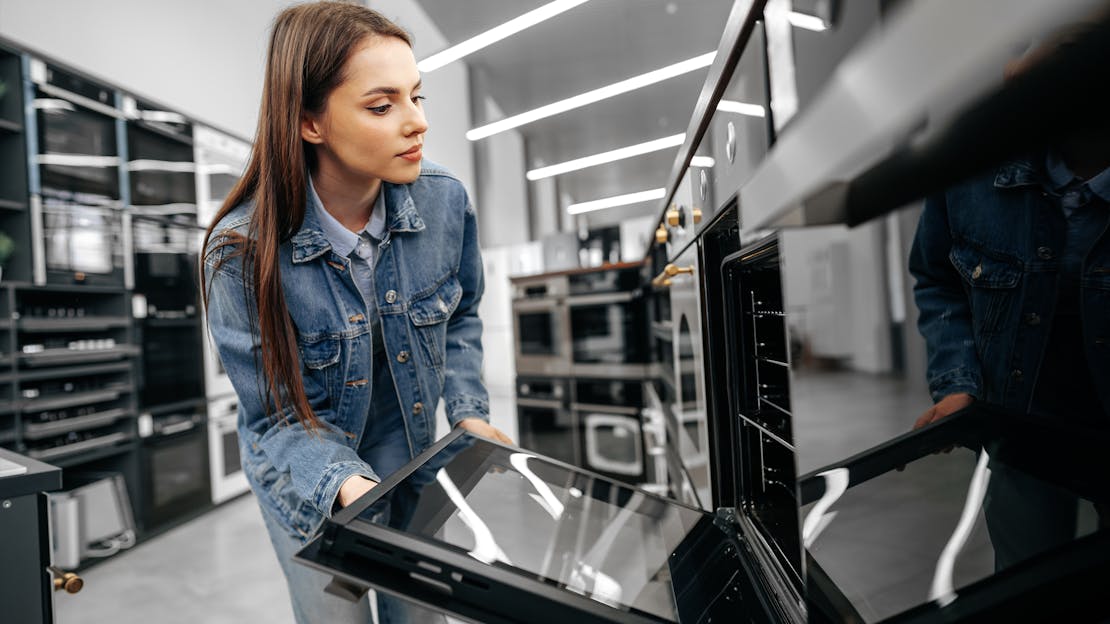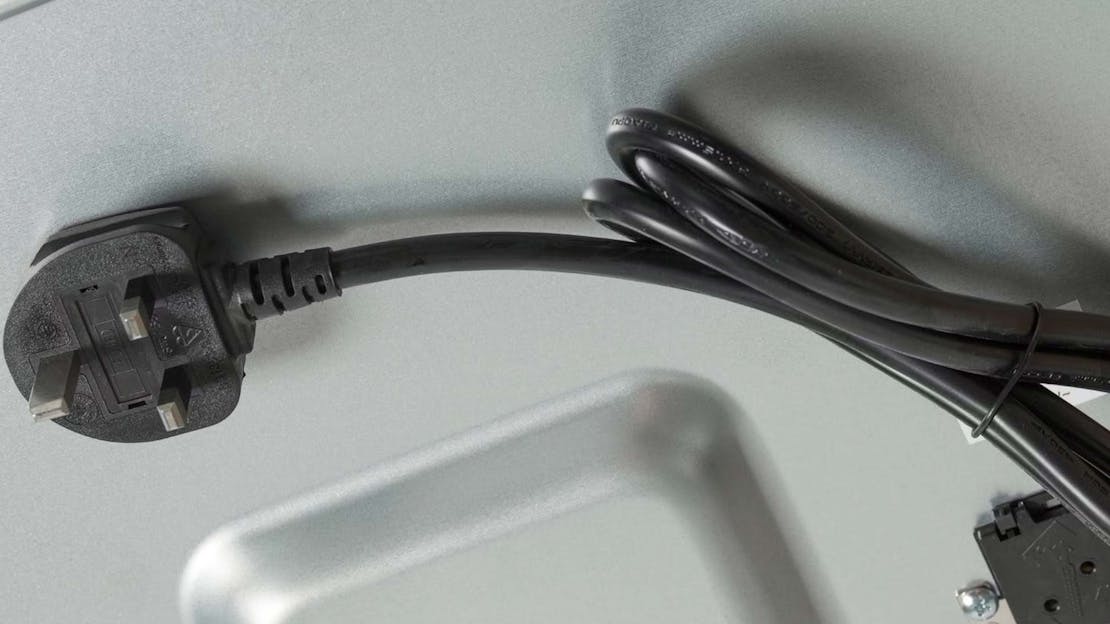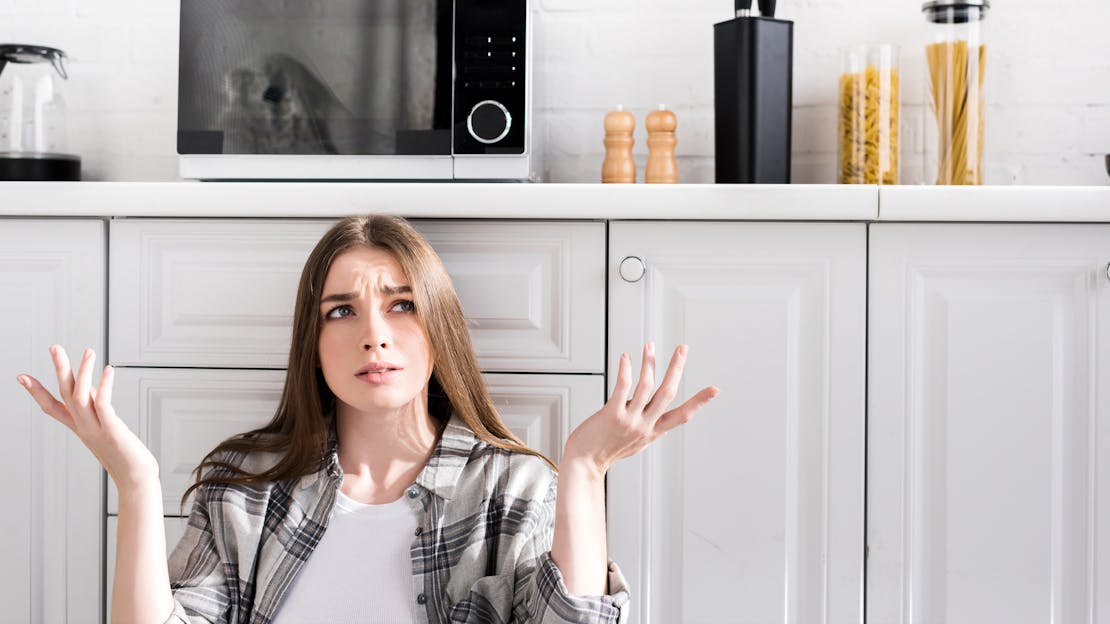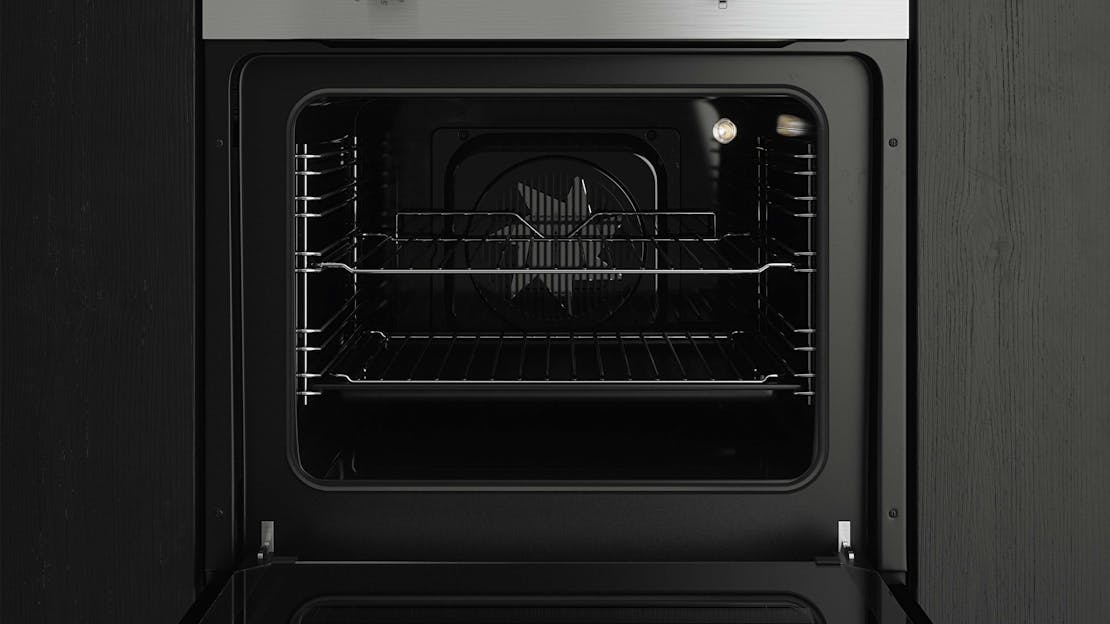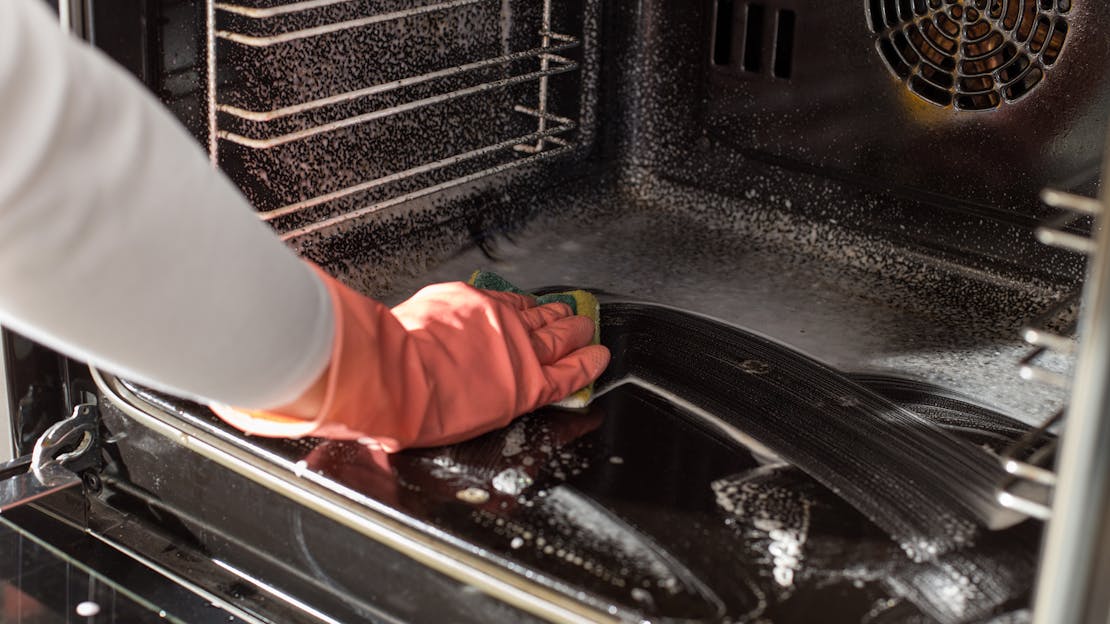
What is a Pyrolytic Oven & How Do They Work?
A pyrolytic oven is a type of self-cleaning oven commonly found in modern kitchens. This innovative appliance employs high temperatures to burn off food residues and grease, converting them into ash. This process, known as pyrolysis, involves heating the oven to extremely high temperatures, typically around 500°C or higher, for a specific duration, usually a few hours.
During the pyrolysis cycle, the oven door locks for safety, and the internal heating elements raise the temperature to a level where any food residue or grease is completely incinerated. As a result, only ash remains, which can be easily wiped away once the oven has cooled down.
How do pyrolytic ovens work?
Heat Generation: The pyrolytic cleaning cycle starts by heating the oven to extremely high temperatures, usually around 500°C or higher. This high temperature is necessary to burn off the organic matter and turn it into ash.
Oxidation: Once the oven reaches the desired temperature, the door is locked to prevent accidental opening during the cleaning process. The heating element in the oven continues to generate heat, raising the temperature inside the oven chamber.
Organic Matter Decomposition: As the temperature increases, the food residue, grease, and other deposits inside the oven are subjected to a process called pyrolysis. Pyrolysis involves the decomposition of organic materials through high heat in the absence of oxygen. The lack of oxygen prevents combustion and instead breaks down the organic matter into volatile gases and carbonised residue.
Ash Formation: The volatile gases generated during pyrolysis are expelled through vents or filters designed to remove smoke and odours. Meanwhile, the carbonised residue from the organic matter remains inside the oven chamber and gradually turns into ash as the pyrolytic process continues.
Cooling and Ash Removal: After the pyrolytic cleaning cycle is complete, the oven goes through a cooling phase. The temperature inside the oven is gradually reduced to a safe level. Once the oven has cooled down sufficiently, the door can be unlocked, and the ash residue can be easily wiped away using a damp cloth or sponge. The ash is usually very fine and easily removable.
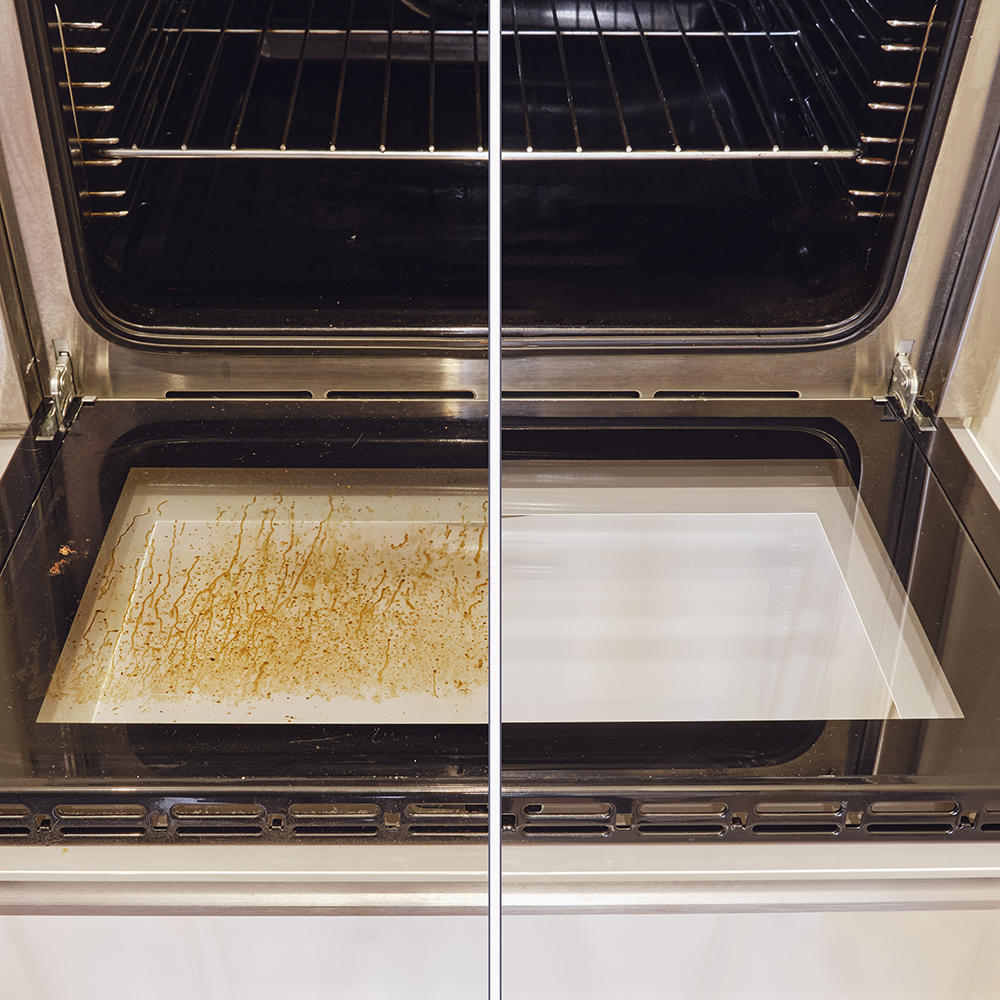
Is the pyrolytic function safe?
It's important to note that pyrolytic ovens generate extremely high temperatures, so caution must be exercised during the cleaning cycle. The oven should not be opened or touched until it has sufficiently cooled down to avoid burns or other safety hazards. Additionally, it's recommended to remove any easily removable accessories or racks from the oven before initiating the pyrolytic cleaning cycle, as they may be damaged by the high temperatures.
Typically, during the pyrolytic cleaning process, the cooling fan of the oven is intensified to safeguard adjacent furniture from potential damage caused by high temperatures. Additionally, as the internal temperature exceeds 300°C, the oven door automatically locks for safety reasons. The door remains locked until the cleaning program is complete and the residual heat inside the oven has dissipated to a manageable level, ensuring safe access to the oven.
Does a pyrolytic oven do all the cleaning?
While pyrolytic ovens are commonly referred to as "self-cleaning," it's important to note that they won't handle every aspect of cleaning, but they do offer significant assistance.
Before initiating a pyrolytic cycle, it's typically necessary to remove the shelves and side runners, and give the inside of the door a wipe-down. Additionally, it's advisable to pre-clean any substantial residues or stubbornly baked-on substances, ensuring a smoother cleaning process. Taking the time to thoroughly clean the exterior glass door is also essential, as any marks present may become baked on and prove challenging to remove.
Though pyrolytic ovens take care of the bulk of the cleaning, these preparatory steps contribute to achieving optimal results. By addressing these areas prior to activating the pyrolytic function, you'll enhance the effectiveness of the self-cleaning process and maintain a pristine oven interior.
While the pyrolytic feature greatly simplifies the cleaning task, it's worth noting that extremely heavy spills or particularly stubborn stains may require additional attention beyond what the self-cleaning cycle can accomplish. However, the convenience and time-saving benefits of pyrolytic ovens remain a highly desirable feature for many users.
"While pyrolytic ovens may not completely handle the entire cleaning process, they do significantly lighten the burden by taking care of a considerable portion."
Pros and Cons of Pyrolytic Ovens
Below is a comprehensive comparison outlining the advantages and disadvantages of pyrolytic ovens:
| Pros | Cons |
|---|---|
| Effortless Cleaning: Pyrolytic ovens offer self-cleaning functionality, eliminating the need for manual scrubbing. | High Energy Consumption: The pyrolytic cleaning cycle requires the oven to reach extremely high temperatures, leading to increased electricity bills. |
| Hygienic: Pyrolytic cleaning helps to sterilise the oven interior, reducing the risk of cross-contamination between dishes. | Long Cleaning Duration: Pyrolytic cleaning cycles can be relatively long, typically lasting several hours, making the oven unavailable for cooking during this time. |
| Time-Saving: Initiate the self-cleaning cycle and let the oven take care of the rest, freeing up time for other tasks. | Potential Smoke and Odours: During the pyrolytic cleaning process, burnt food residues may produce smoke and odours, requiring proper ventilation. |
| Energy-Efficient: Despite high temperatures, pyrolytic cleaning is a relatively short process and consumes less energy compared to manual cleaning or using chemical cleaners. | Limited Compatibility: Not all cookware and oven accessories are suitable for use during pyrolytic cleaning, potentially leading to damage. |
| Longevity: Regular use of the pyrolytic cleaning function helps maintain the oven's performance and extend its lifespan, reducing the need for repairs or replacements. | Initial Cost: Pyrolytic ovens tend to be more expensive upfront due to the added self-cleaning feature, which may deter some buyers. |
Overall, while pyrolytic ovens offer numerous benefits in terms of convenience and hygiene, potential drawbacks such as high energy consumption and long cleaning durations should be considered when deciding whether to invest in this type of oven.
Top Selling Single Electric Ovens from MyAppliances
Upgrade your kitchen with our range of ovens, including fan, multifunction, and self-cleaning options. From even heat distribution in fan ovens to versatile cooking modes in multifunction ovens and hassle-free maintenance with self cleaning ovens, we have everything to suit your cooking needs. Experience convenience and innovation in your kitchen with our oven solutions.
Everything you need to know about Ovens
Everything you need to know about Ovens
Ovens are indispensable appliances in the modern kitchen, serving as versatile tools for a wide range of cooking and baking tasks. Understanding the ins and outs of ovens can greatly enhance your cooking experience. In our guides, we delve into everything you need to know about ovens, from their types and features to tips on using them effectively.
![The Ultimate Guide to Single Electric Ovens]()
This comprehensive guide is designed to empower you with the knowledge needed to make an informed decision when selecting a single electric oven for your kitchen. Throughout this guide, we will delve into various aspects of single electric ovens.
![The Ultimate Guide to Double Ovens]()
If you're in the market for a versatile cooking appliance that can revolutionise your culinary experience, you're in the right place. In this guide, we'll explore what double ovens are, how they differ from their single counterparts, and the numerous benefits they bring to your kitchen.
![The Ultimate Guide to Gas Ovens]()
In this comprehensive guide, we'll delve into the history and evolution of gas ovens, explore their advantages and disadvantages, and provide you with everything you need to know about selecting, installing, and maintaining these kitchen appliances.
![Ultimate Oven Buying Guide]()
Welcome to the comprehensive guide on electric ovens! Whether you're a passionate home cook or someone who simply enjoys preparing delicious meals, this guide is here to provide you with valuable insights into the world of electric ovens.
![The Ultimate Pyrolytic Oven Guide]()
A pyrolytic oven is a self-cleaning appliance that utilises high temperatures to incinerate food residue and grease, eliminating the need for manual scrubbing. During the cleaning cycle, which reaches temperatures as high as 400 to 500 degrees Celsius, the oven locks its door and converts organic matter into ash.
![The Ultimate Guide to Oven Functions]()
In this comprehensive guide, we delve into these multifaceted functions, revealing how ovens can elevate your cooking experience, ensure safety, provide convenience, and simplify maintenance.
![The Ultimate Guide to Fan Ovens]()
A fan oven, also known as a convection oven, is an appliance that utilises a fan to circulate hot air evenly, resulting in more uniform cooking, quicker cooking times, and precise temperature control.
![Pyrolytic, Catalytic or Steam Clean Ovens?]()
Can you confidently compare pyrolytic, catalytic, and steam-cleaning ovens if you were in the market for a new one? If not, you're not alone in this predicament! Nevertheless, it's a vital question to address, even though it won't be the sole determinant in your choice. Presently, the three primary cleaning modes - pyrolysis, catalysis, and steam cleaning - each possess their own merits and limitations.
![How to Clean an Oven Quickly, Easily and Thoroughly]()
In this article, we address frequently asked questions about oven cleaning and provide valuable tips and advice to assist you in achieving a sparkling and well-maintained oven.
![Choosing the Best Single Oven for Your Household]()
Choosing the best single oven for your household can be a daunting task, given the wide range of options available on the market. In this guide, we will provide recommendations for the best single oven for different types of households.
![Can I plug my oven into a normal socket?]()
Electric ovens have a kW rating that tells you how much power they use. For ovens under 3kW, it is perfectly acceptable to power them using a regular 13 amp plug and socket.
![What's the difference between a double oven vs single oven?]()
When searching for a new built-in oven, the abundance of options available can quickly lead to feelings of overwhelm. To navigate this extensive selection, it's crucial to begin by considering the type of built-in oven that would be the perfect fit for your home.
![What is a good size oven capacity?]()
Oven capacity refers to the internal volume or space available inside an oven for cooking and baking purposes. The average capacity of a single oven is typically around 60 litres.
![Do all ovens have a grill?]()
The availability of a grill feature in an oven depends on the specific model and type of oven. While many ovens are designed with a built-in grill element, there are also ovens that are solely focused on baking and do not include a grill function.

